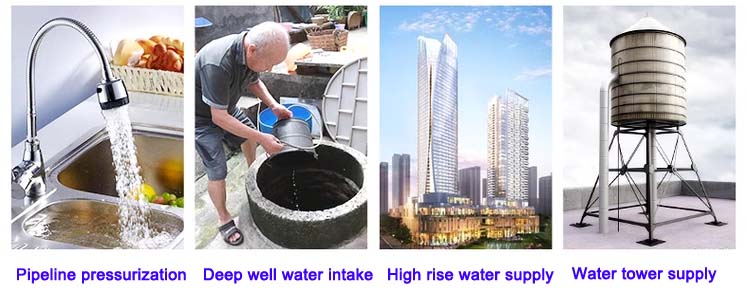English
- Afrikaans
- Albanian
- Amharic
- Arabic
- Armenian
- Azerbaijani
- Basque
- Belarusian
- Bengali
- Bosnian
- Bulgarian
- Catalan
- Cebuano
- Corsican
- Croatian
- Czech
- Danish
- Dutch
- English
- Esperanto
- Estonian
- Finnish
- French
- Frisian
- Galician
- Georgian
- German
- Greek
- Gujarati
- Haitian Creole
- hausa
- hawaiian
- Hebrew
- Hindi
- Miao
- Hungarian
- Icelandic
- igbo
- Indonesian
- irish
- Italian
- Japanese
- Javanese
- Kannada
- kazakh
- Khmer
- Rwandese
- Korean
- Kurdish
- Kyrgyz
- Lao
- Latin
- Latvian
- Lithuanian
- Luxembourgish
- Macedonian
- Malgashi
- Malay
- Malayalam
- Maltese
- Maori
- Marathi
- Mongolian
- Myanmar
- Nepali
- Norwegian
- Norwegian
- Occitan
- Pashto
- Persian
- Polish
- Portuguese
- Punjabi
- Romanian
- Russian
- Samoan
- Scottish Gaelic
- Serbian
- Sesotho
- Shona
- Sindhi
- Sinhala
- Slovak
- Slovenian
- Somali
- Spanish
- Sundanese
- Swahili
- Swedish
- Tagalog
- Tajik
- Tamil
- Tatar
- Telugu
- Thai
- Turkish
- Turkmen
- Ukrainian
- Urdu
- Uighur
- Uzbek
- Vietnamese
- Welsh
- Bantu
- Yiddish
- Yoruba
- Zulu
Telephone: +86 13120555503
Email: frank@cypump.com
Nov . 04, 2024 11:20 Back to list
Choosing the Right Basement Lift Pump for Optimal Flood Prevention Solutions
Understanding Basement Lift Pumps A Comprehensive Guide
Basements are often prone to flooding due to ground moisture, heavy rainfall, or plumbing failures. In regions where water tables are high, having a reliable drainage system in place is crucial to prevent potential damage to basements. One effective solution is the use of a basement lift pump. This crucial piece of equipment not only safeguards your basement from flooding but also contributes to the overall health of your home by managing water flow effectively.
What Is a Basement Lift Pump?
A basement lift pump, commonly referred to as a sump pump, is a device designed to remove water that accumulates in a sump basin, typically located in the lowest part of a basement or crawl space. The pump is activated either automatically or manually, depending on the model, and it works to extract excess water, directing it away from the foundation of the home. This ensures that the basement remains dry, maintaining structural integrity and preventing mold and mildew growth.
Types of Basement Lift Pumps
There are primarily two types of basement lift pumps submersible and pedestal pumps.
1. Submersible Pumps These are designed to be submerged in the water they are pumping out. They are typically quieter than pedestal pumps and can handle larger volumes of water. Submersible pumps also tend to have a longer lifespan due to their waterproof design. However, they may require more maintenance, as they can be prone to clogging.
2. Pedestal Pumps In contrast, pedestal pumps have a motor mounted above the sump basin, meaning they are not submerged in water. While they tend to be more accessible for servicing, pedestal pumps can be noisier and are generally less powerful than submersible pumps.
Importance of Basement Lift Pumps
The primary role of a basement lift pump is to prevent flooding, but its benefits extend beyond that. By keeping the basement dry, the pump helps to prevent structural damage, including bowing walls, foundation cracks, and wood rot. Additionally, a dry basement enhances indoor air quality and reduces the risk of mold growth, which can lead to serious health issues for occupants.
Furthermore, having a lift pump can potentially increase the value of your home. Prospective buyers are often wary of properties with a history of water damage or flooding. A functioning sump pump provides peace of mind and can be a significant selling point when it comes time to place your home on the market.
basement lift pump

How to Choose the Right Lift Pump
When selecting a basement lift pump, consider the following factors
1. Capacity Evaluate the volume of water you expect to handle. Smaller homes may require pumps with capacities ranging from 1/4 to 1/2 horsepower, whereas larger homes in flood-prone areas may need more powerful models.
2. Switch Type Look for pumps with reliable float switches that can detect water levels accurately. Options include tethered floats, vertical floats, and electronic switches that can offer better control and reliability.
3. Material and Build Quality Choose a pump made from durable materials such as corrosion-resistant thermoplastic or cast iron, which can withstand the harsh conditions often found in basements.
4. Battery Backup Consider investing in a pump with a battery backup system. This will ensure the pump continues to operate even during power outages, which are common during severe weather events.
Regular Maintenance and Care
To ensure your basement lift pump operates efficiently, regular maintenance is essential. This includes
- Checking the pump's operation periodically. - Cleaning the sump pit of debris and ensuring the intake screen is clear. - Testing the float switch to ensure it is functioning correctly. - Inspecting the discharge pipe for clogs or cracks.
Conclusion
Overall, a basement lift pump is an investment that pays off by protecting your home from the damaging effects of water accumulation. By understanding the importance of these pumps and how to choose the right one for your needs, homeowners can take proactive measures to safeguard their basements and enhance their property's value. Remember, a dry basement is a happy basement!
-
ISG Series Vertical Pipeline Pump - Chi Yuan Pumps | Advanced Engineering&Industrial Efficiency
NewsJul.30,2025
-
ISG Series Pipeline Pump - Chi Yuan Pumps | High Efficiency, Energy Saving
NewsJul.30,2025
-
ISG Series Vertical Pipeline Pump-Chi Yuan Pumps|High Efficiency&Reliable Performance
NewsJul.29,2025
-
ISG Series Vertical Pipeline Pump|High Efficiency&Low Noise
NewsJul.29,2025
-
ISG Series Vertical Pipeline Pump - Chi Yuan Pumps Co., LTD.|High Efficiency, Energy Conservation, Low Noise
NewsJul.29,2025
-
ISG Series Vertical Pipeline Pump-Chi Yuan Pumps Co., LTD.|High Efficiency&Energy-Saving
NewsJul.29,2025










